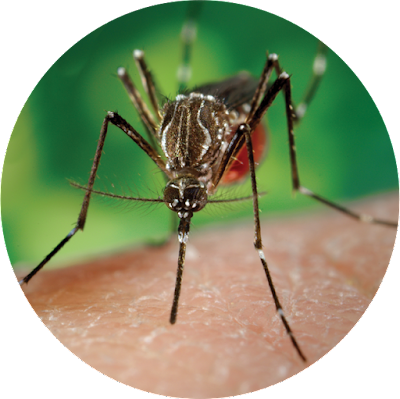
|
Aedes aegypti or the yellow fever mosquito is expanding its range in California.
(Photo courtesy of Sacramento-Yolo Mosquito & Vector Control)
|
Aedes aegypti found in Sacramento and Placer counties
As if we don’t have enough to worry about, add this one to the list:
Aedes aegypti,
aka the yellow fever mosquito.
Relatively new to Northern California,
Aedis aegypti
have been found in Sacramento and Placer counties, specifically Antelope, Citrus Heights and Roseville.
Besides its namesake yellow fever, this invasive mosquito can carry several devastating tropical diseases including zika, dengue fever and Chikungunya virus. According to experts, it hasn’t yet transmitted those diseases inside California, but the potential threat is there.
What makes this mosquito particularly nasty and hard to control: It doesn’t behave like other mosquitoes. And it prefers human blood to other food sources.
Unlike most mosquitoes, it does not need standing water to reproduce. This pest lives primarily indoors with people or other places around the home. It can live its whole life cycle next to us. That makes spraying for control difficult.
So far,
Aedes aegypti
has been found in at least 284 California cities, where it thrives in people’s homes and backyards. The California Department of Public Health posts monthly updates on this mosquito’s distribution. Find it here:
https://bit.ly/315HAVD
Because of this mosquito’s unique profile, successful abatement requires the helping hands (and eyes) of the public, say health experts. People need to watch out for
Aedes aegypti
and take special (but easy) precautions for successful control.
Aedis aegypti
is a little guy, about ¼-inch long or smaller. It’s dark, almost black, with white stripes and a distinctive marking shaped like a tiny white lyre or harp.
Only the females bite, but they like to feed during the day time, opportunistically biting people indoors where they also like to rest. They’re very aggressive and very hungry. They tend to bite lower legs and ankles.
These mosquitoes can sense where water was recently or likely to return, such as the inside of a vase or the inside edge of a container planting or the saucer below the pot. That’s where they lay their eggs; any potential water-holding container. When water returns, the eggs hatch.
Aedes aegypti
also likes old tires or other spots that may collect rain water or moisture from a sprinkler. They can lay eggs on the edges of septic tanks, birdbaths, koi ponds, fountains, buckets, wheelbarrows and other spots that once held water and are likely to get wet again.
Prolific in warm weather, this mosquito can lay 100 to 200 eggs in a batch with up to five batches in her lifetime, which usually ranges two to four weeks. Unlike most mosquitoes,
Aedes aegypti
likes to spread her eggs around, depositing them at various heights above the waterline so they don’t all hatch at once. Each egg looks like a round speck of black pepper.
The eggs can stay dry and waiting for a long time – sometimes months. When water arrives, the eggs are ready to go.
How do you combat such a mosquito? Pay extra attention to the inside of flower pots, saucers and vases as well as other spots where it may lay eggs. Scrub off anything that looks like pepper specks.
Also regularly scrub out pet water bowls and birdbaths.
Keep an eye out for any place that may collect water. Always drain standing water in outdoor containers (and indoors, too).
Make sure your window and door screens keep bugs out. Wear mosquito repellent. And although it’s summer, wear long pants and long sleeves.
How do you know it’s this mosquito and not another bug? Daytime biting is a key characteristic that sets
Aedes aegypti
apart. If you’re being bitten by mosquitoes during the day, contact your local vector control district.
For more on mosquito control and to contact your local district:
FighttheBite.net
.

